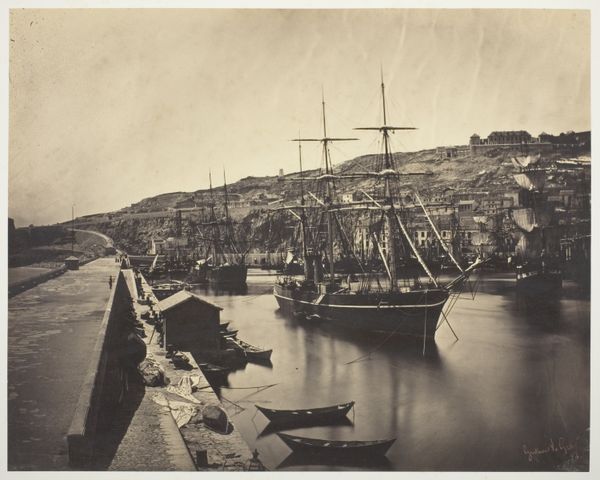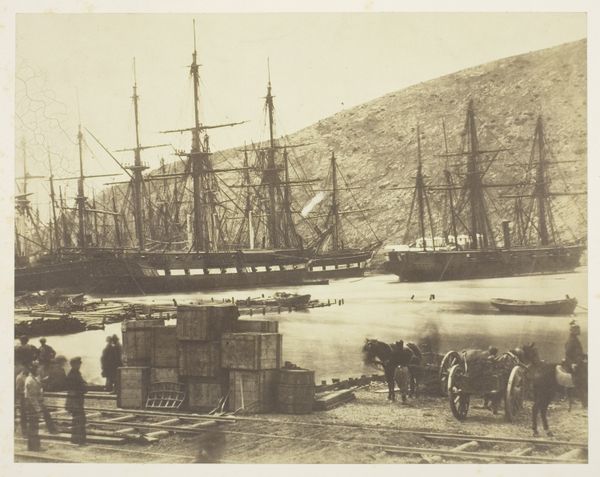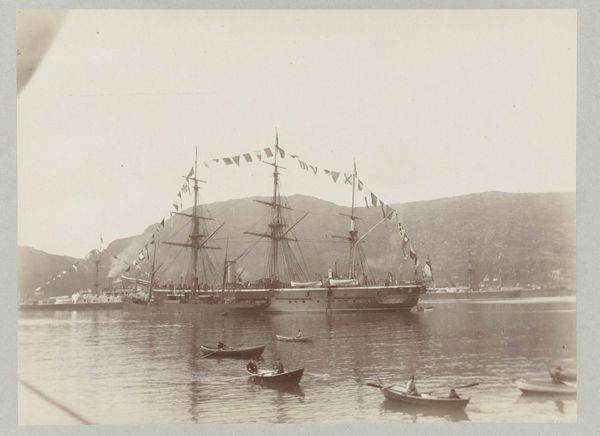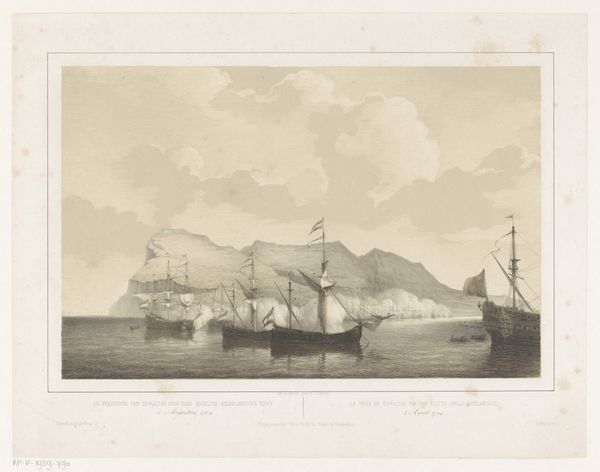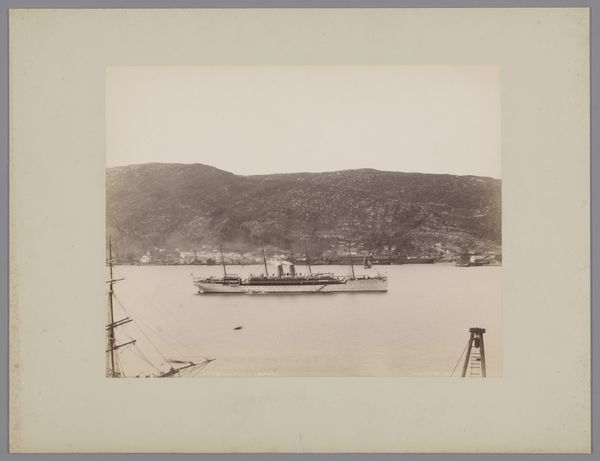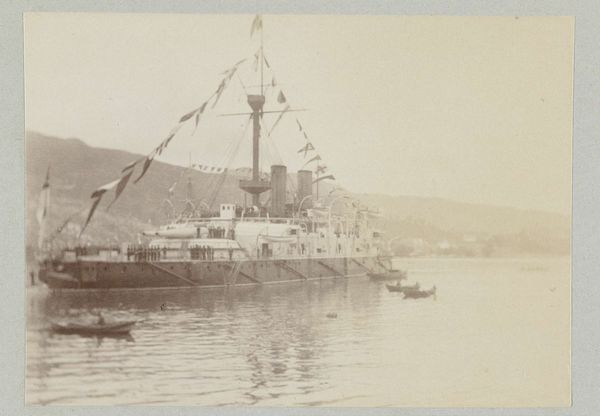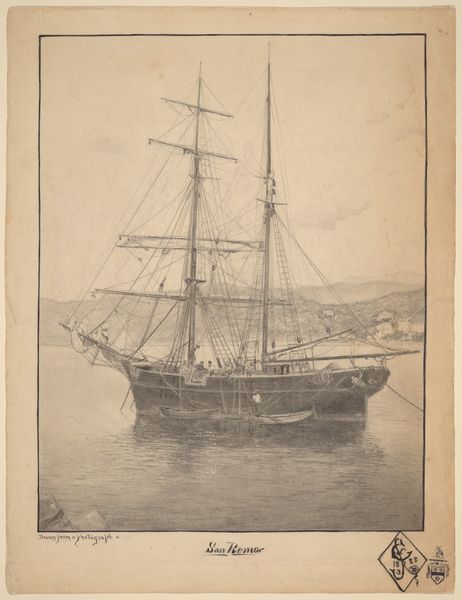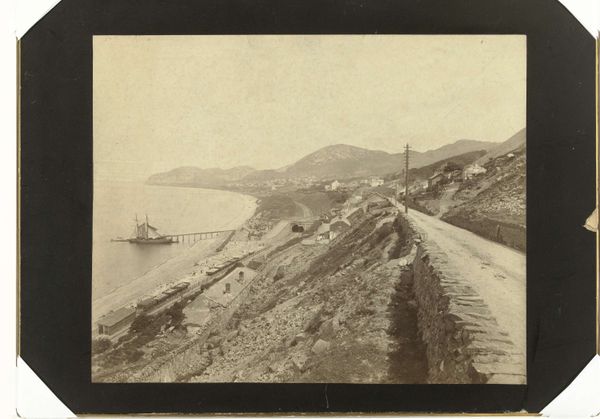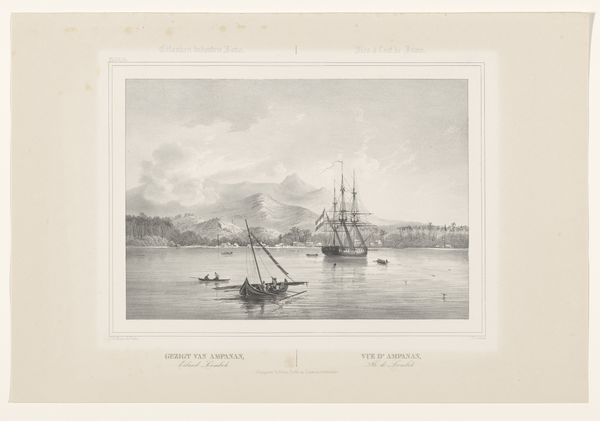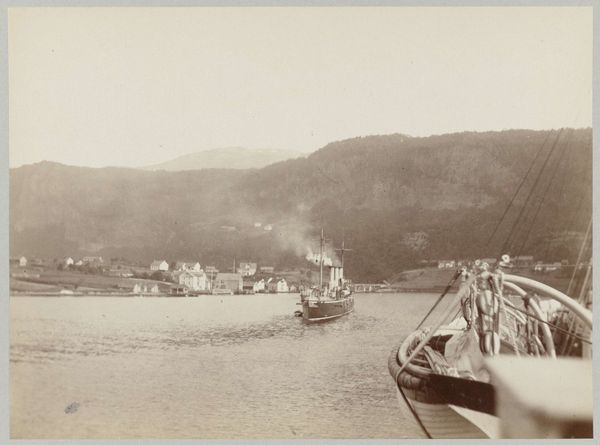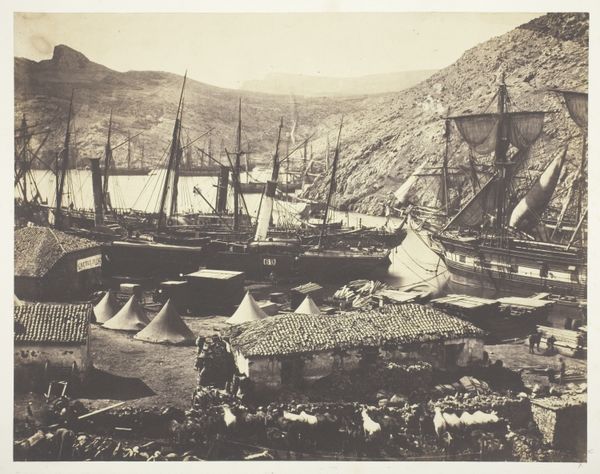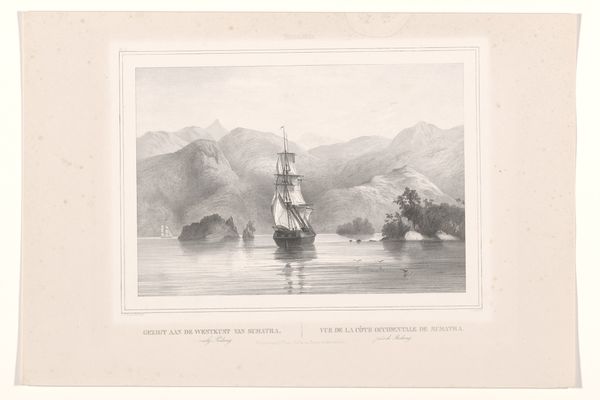
print, photography
# print
#
landscape
#
photography
Dimensions: height 187 mm, width 233 mm
Copyright: Rijks Museum: Open Domain
Editor: Here we have a photograph entitled "Schip in een baai," or "Ship in a Bay," taken sometime between 1860 and 1890 by Woodbury & Page. It has this kind of dreamy, ethereal feel with the ship surrounded by calm water and lush land. What strikes you most when you look at this? Curator: I think what resonates is the tension between the picturesque scene and the undercurrents of colonial expansion embedded within it. Consider the date – the mid-to-late 19th century. This was a period of intense maritime activity driven by global trade, and often, imperial ambitions. Where do you think this bay might be located and what significance it may hold? Editor: I hadn't considered the location! It feels almost generic in its beauty. Maybe somewhere in Europe? Curator: Potentially, but let’s consider Woodbury & Page were active in the Dutch East Indies. Doesn't that knowledge immediately change the photograph's dynamic? What could have been the motivation behind creating and circulating this photograph? Editor: Well, if it's the Dutch East Indies, then the seemingly tranquil bay becomes a site of resource extraction, and possibly exploitation, by a colonial power. Curator: Exactly! The ship is no longer a simple vessel, but a tool of empire. Think of it bringing goods, administrators, or military personnel to further colonial goals. Consider also the viewpoint. Who had access to making photographs and circulate such a scene? How did it further influence the identity of both colonizer and colonized? Editor: That’s incredible. So this peaceful scene is not just aesthetically pleasing, but a document intertwined with complicated social, political, and economic forces at play. Curator: Precisely. Even in something that appears purely landscape, we can trace these intricate colonial narratives. We begin to appreciate not only the artistic merit but also the loaded context it inhabits, changing how we consider landscape as a passive witness. Editor: Thank you for highlighting those connections! I’ll definitely carry this new perspective with me moving forward.
Comments
No comments
Be the first to comment and join the conversation on the ultimate creative platform.

